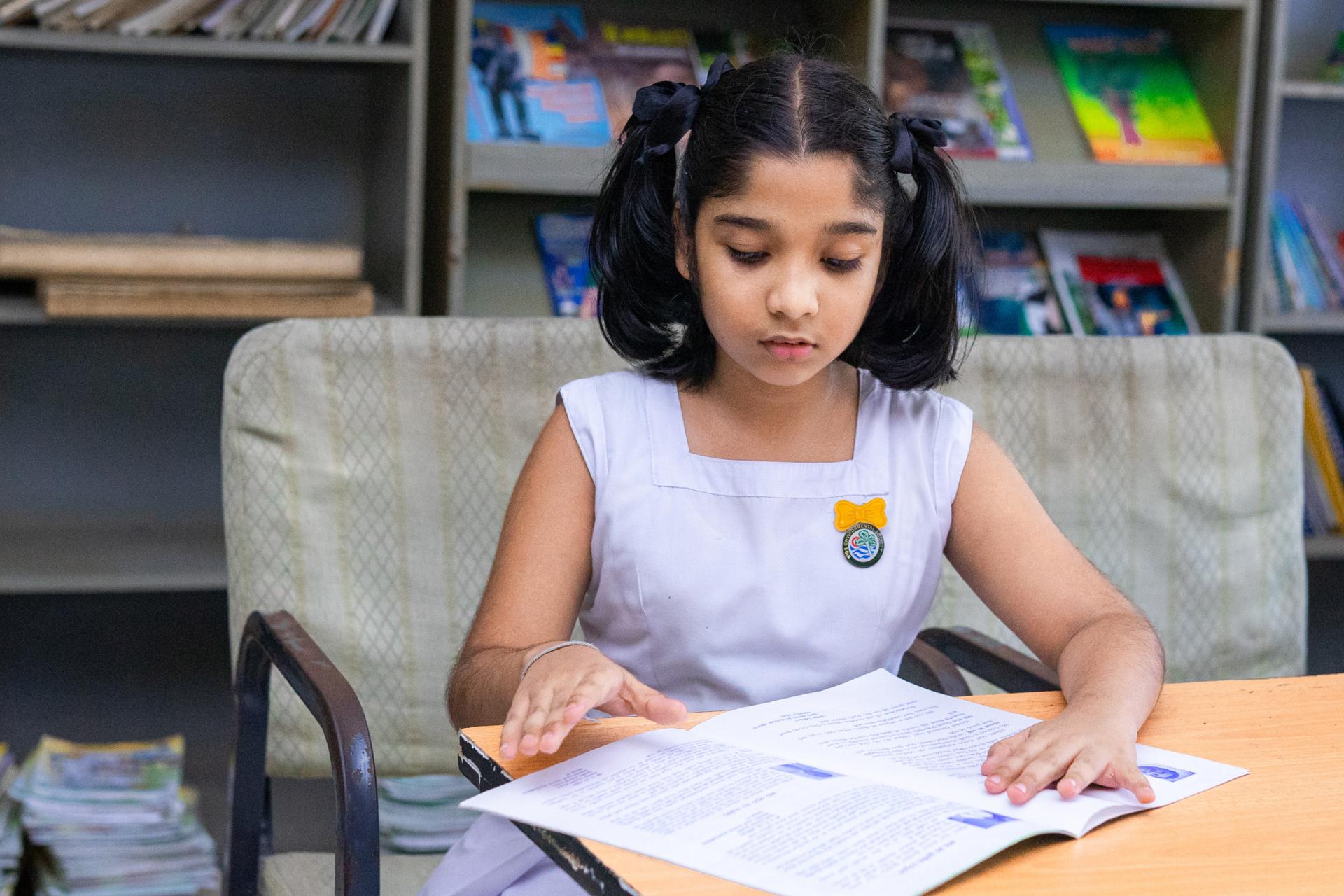ACCESS TO EDUCATION FOR ALL
Home-Based Learning Supports Learning Continuity during Crisis

UNICEF – 24 March 2023
Seven-year-old Yehansa, a grade two student from Colombo, Sri Lanka remained engaged in her education during school closure last year thanks to the home-based learning (HBL) activity pack she received. Yehansa studies at Sri Sangamiththa Girls School located in Maradana – an industrial and residential suburb of the capital, Colombo.
“I was very happy to receive the activity books,” says Yehansa. “Most of the activities I did by myself with guidance from my mother. There were many activities; one for every day. My favourite was an activity to draw and paint a cat with coloured, dried coconut flakes. My mother helped me by colouring the dried coconut flakes. I painted the drawing of the cat.” She adds, “I also wrote a poem about my mother, which I am very proud of.”
Today, schools are back in operation, and Yehansa is happy to be studying with her classmates. She, like many others in her class, resumed the grade two classroom-based studies with ease as they had been engaged even during school closure. She and her classmates reminisce over some of their favourite activities from the pack; together they sing the ‘Banana Shake’ song – a catchy rhyme from the activity book.
In the recent years, Sri Lanka’s education sector has faced multiple setbacks; schools have remained shut for prolonged periods due to the COVID-19 pandemic through 2020 and 2021 and then again in 2022 due to the economic crisis the country faced which disrupted even the basic services such as healthcare, fuel supply and transport.

Ms Achini with her students
“This activity book provides a great learning opportunity. As teachers, we too must study and explore ways to incorporate these methods into our classroom teaching . We must also support the students to engage and complete the activities – which is critical for the child’s learning cycle.”
As a response, UNICEF, with the technical support from the Ministry of Education and funding from the Government of New Zealand, developed home-based learning packs for primary grades 1 to 4. The packs aim to support learning recovery and continuity for young children who have missed out on schooling and have not had access to online learning opportunities.
As a model programme, the learning kits were distributed among 144,000 most disadvantaged students in the Colombo, Kalutara and Gampaha Districts. Yehansa was among the students from Colombo that benefitted from this response.
Considering the planned education reforms in the country and the new curriculum, the study packs were designed with a host of activity-based lessons covering math, local languages, and environmental studies. Each book contains modules that can keep a child occupied with lessons for five days running up to eight weeks. The study packs are in both local languages, Sinhala and Tamil, to be completed at home, with a variety of practical learning activities.
Achini Kuruppu (42) teaches Grade 2 at Sri Sangamiththa Girls College. She also played a role in developing the activity book by contributing towards it with technical support. “This activity book provides a great learning opportunity. As teachers, we too must study and explore ways to incorporate these methods into our classroom teaching . We must also support the students to engage and complete the activities – which is critical for the child’s learning cycle.”

Students continues to use HBL activities packs in schools
“The Home-Based Learning packs contain lessons and activities that require parents to comment on their child’s progress, and teachers to provide their feedback. In the typical classroom, a teacher must focus on about a class of 35 students. But with this book, we can pay individual attention to our children,”




